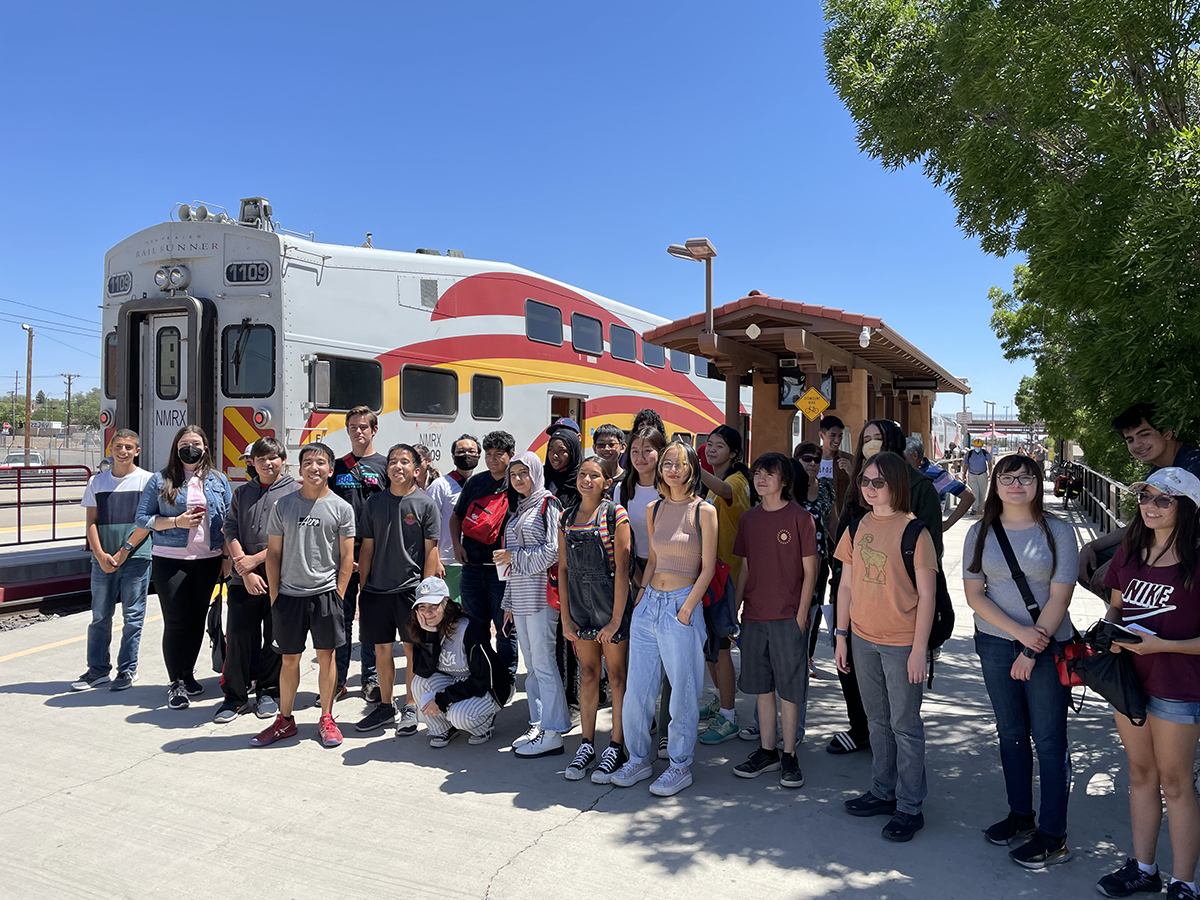Recent News
Ferenchak named chair of Transportation Research Board Pedestrian Committee
October 31, 2025
Ferenchak named APBP 2025 Research Professional of the Year
October 1, 2025
UNM professor to speak at TEDxABQ event
September 24, 2025
NSF funds research to investigate whether treated wastewater can help mitigate water scarcity in arid regions without compromising river ecosystem health
September 2, 2025
News Archives
School of Engineering summer program hits the rails to attract middle and high schoolers to STEM
July 29, 2022 - Kim Delker

This summer, middle and high school students from around New Mexico took part in a unique field trip to pique their interest in engineering and science fields, thanks to a partnership between The University of New Mexico School of Engineering and the Federal Railway Administration (FRA).
The School of Engineering Summer Academy event was part of a three-year project, led by Fernando Moreu, associate professor in the Department of Civil, Construction and Environmental Engineering, and his Smart Management of Infrastructure Laboratory (SMILab). He collaborated with the Rail Runner, CN Railways, Florida A&M University and Stanford University on the project.
Moreu said that attracting New Mexico students into STEM disciplines is an ongoing challenge, despite the fact that the state is home to a lot of engineering and science activity at Sandia National Laboratories and Los Alamos National Laboratory.
“The public education system in New Mexico is always rated in the lower half of the U.S. education system, and this has caused a mismatch between available jobs and the local population,” he said. “Our goal with this program is to help bridge that gap.”
The School of Engineering Summer Academy helps to integrate STEM into practical learning for middle and high school students.
On June 10, Moreu led a field trip with 26 middle and high school students on the Rail Runner. The group went to Santa Fe Plaza, conducting an experiment that measured the New Mexico Rail Runner's trek from Albuquerque up to Santa Fe using a motion sensor, the Low-Cost Efficient Wireless Intelligent Sensor (LEWIS), made by SMILab. These LEWIS sensors allow accurate measurements of an object's position over time while using affordable equipment within a simplistic design.
The students plotted the entire train ride using one LEWIS and a Google Chromebook. The data collected could be used by the savvy future railroaders to find locations of concern during the ride and eventually inform data-based centered management decisions for railroads.
Moreu said the objective of this project from the FRA perspective is to attract talent to the railroad workforce with new technologies that are attractive today, such as drones, sensors, augmented reality and 3D printing. The middle school population of interest are from racially diverse groups, as the railroad industry is looking to make its workforce look more like the increasingly-diverse American population.
Moreu said that the LEWIS sensors are a perfect tool for educating this age group.
“In general, our younger people are familiar with software or computer games, but they are not trained to fabricate things,” he said. “If they fabricate a simple sensor with their hands themselves, they become brave to learn things that they thought were impossible. It’s like a superhero when they discover their powers.”
Moreu said this outreach is possible thanks to the support of the National Science Foundation, TRANSET and the New Mexico Consortium. The graduate and undergraduate students supported by these projects are the mentors of the middle school students. With the help of undergraduates, graduate students and collaborations with local industries such as the Rail Runner, Moreu said his team can help make STEM careers more accessible to New Mexico youth.
